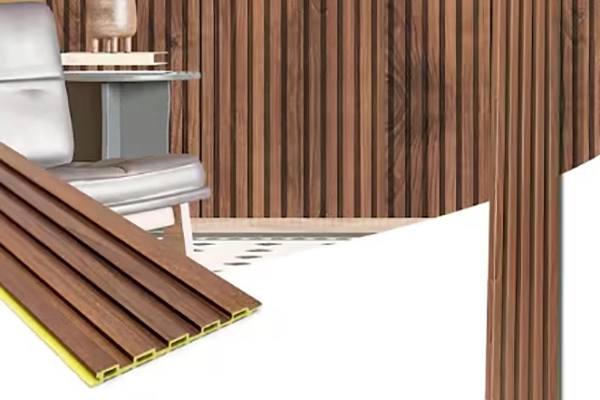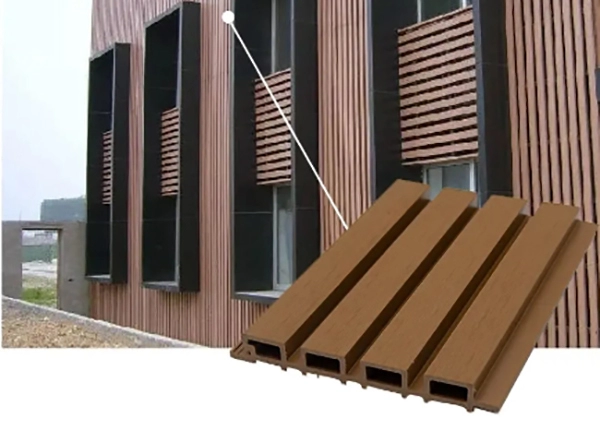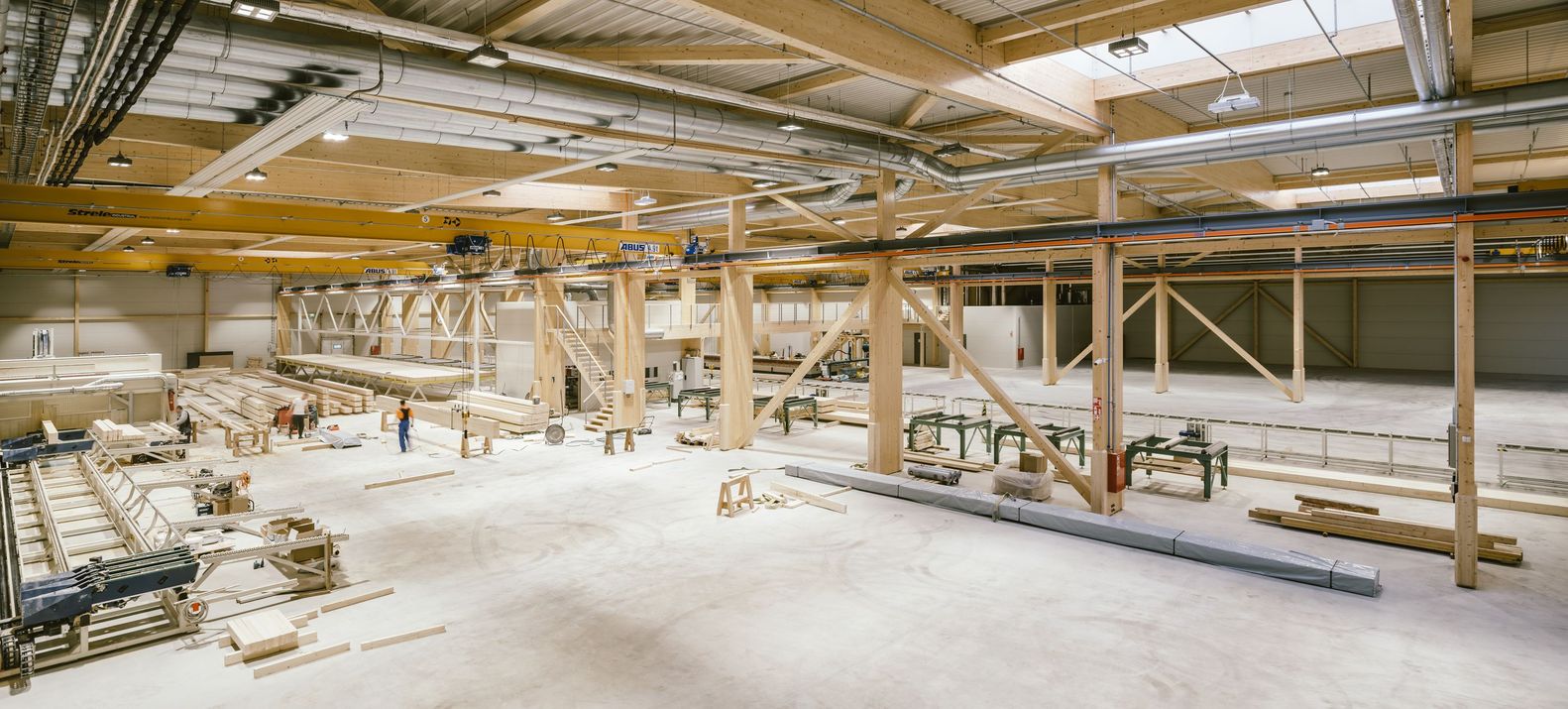CATEGORIES
WPC: The Durable and Versatile Option for Outdoor Spaces, Cladding, and Decking
This article will explore the world of Wood Plastic Composite (WPC), a revolutionary building material rapidly gaining popularity for outdoor applications. We'll dive deep into its composition, benefits, uses, and why it's becoming the preferred choice for homeowners, construction companies, and interior designers looking for durable, low-maintenance, and aesthetically pleasing solutions for floors, decks, cladding, and more. If you are looking for a material that can enhance your outdoor aesthetic and withstand the elements, this read is worth your time.
1. What is WPC (Wood Plastic Composite)?
WPC, or Wood Plastic Composite, is a hybrid material composed of a combination of wood fibers or flour and thermoplastics (like PE, PP, or PVC). The wood component provides strength and a natural aesthetic, while the plastic offers durability, water resistance, and protection against rot and pests. This unique combination of wood and plastic results in a material that combines the best of both worlds. The manufacturing process involves thoroughly mixing finely ground wood particles with heated thermoplastic resin. The mixture is then extruded or molded into the desired shape, such as WPC boards for decking or cladding. Special additive are used during manufacturing to increase UV resistance.
WPC is becoming increasingly popular for indoor and outdoor applications, offering a compelling alternative to traditional wood. Its versatility, durability, and eco-friendliness make it a suitable material for various projects, from residential patios to large-scale commercial developments.
2. What are the Key Advantages of Using WPC for Outdoor Applications?
One of the primary advantages of WPC is its exceptional durability and resistance to the elements. Unlike traditional wood, WPC is designed to withstand harsh weather conditions, including prolonged exposure to sunlight, rain, and snow. This makes it an excellent option for outdoor use in any climate.
Here's a breakdown of the key benefits:
-
Durability and Weather Resistance: WPC exhibits high resistance to moisture, preventing rot, decay, and warping. It's also UV-resistant, meaning it won't fade or discolor significantly under the sun's rays.
-
Low Maintenance Requirements: One of the biggest selling points of WPC is its low maintenance. Unlike natural wood, it doesn't require regular sealing, staining, or painting. A simple cleaning with soap and water is usually all that's needed to keep it looking its best.
-
Pest Resistance: WPC is impervious to termites and other wood-boring insects, eliminating a common concern associated with real wood decking and cladding.
-
Aesthetic Appeal: WPC is available in a wide range of colors and finishes, mimicking the look of natural wood or offering contemporary designs. This allows you to achieve your desired outdoor aesthetics without compromising on performance.
-
Slip Resistance: Many WPC decking products feature textured surfaces that provide excellent slip resistance, making them a safer option for patios and pool areas.

3. How Does WPC Compare to Traditional Wood and Other Materials?
When choosing materials for outdoor applications, it's essential to consider the pros and cons of each option. Here's a comparison of WPC to traditional wood and other common materials:
| Feature | WPC | Traditional Wood | PVC | Composite (Other) |
|---|---|---|---|---|
| Durability | High | Moderate to Low | High | Varies |
| Weather Resistance | High | Low to Moderate | High | Moderate to High |
| Maintenance | Low | High | Low | Moderate |
| Pest Resistance | High | Low | High | High |
| Cost | Moderate to High | Low to High | Moderate | Moderate to High |
| Aesthetic Appeal | Versatile | Natural, Classic | Less Natural | Varies |
| Eco-Friendliness | High (Often Recycled) | Moderate (If Sustainable) | Moderate | Varies |
As the table shows, WPC offers a compelling balance of performance, aesthetics, and sustainability. While traditional wood has a classic appeal, it requires significantly more maintenance and is susceptible to rot, decay, and insect damage. PVC is durable and water-resistant, but it can lack the natural look and feel of WPC.
4. Is WPC Truly Eco-Friendly?
The environmental impact of building materials is a growing concern. WPC is often considered an eco-friendly option for several reasons:
- Recycled Materials: Many WPC products are made using recycled materials, such as recycled plastic and wood waste. This reduces the demand for virgin resources and helps divert waste from landfills.
- Long-Lasting: The durability of WPC means it has a longer lifespan than many other materials, reducing the need for frequent replacements and minimizing waste.
- Recyclable: Some types of Wpc products are also recycable.
By choosing WPC, particularly products made with a high percentage of recycled content, consumers and businesses can make a more sustainable choice for their outdoor spaces.
5. What are the Different Applications of WPC? (Decking, Cladding, Flooring)
The versatility of WPC makes it suitable for a wide range of indoor and outdoor applications. Here are some of the most common uses:
- WPC Decking: WPC decking is a popular alternative to traditional wood decks. It offers a beautiful, long-lasting, and low-maintenance surface for patios, balconies, and pool areas.
-
WPC Cladding: WPC cladding provides an attractive and durable exterior finish for buildings. It can be used on exterior walls to enhance the aesthetic appeal and provide protection from the elements. See our WPC Wall Panel page for more information.
-
WPC Wall panel is a popular choice for interior decorating. WPC have various colors and designs to create a unqiue and stylish look.
-
WPC Outdoor Flooring: WPC can be used for various outdoor flooring solutions, such as walkways, garden paths, and playground surfaces.
-
Garden furniture is also one of the outdoor applications that WPC can be used for.
6. How to Install WPC Decking and Cladding: A Brief Overview
While professional installation is always recommended, WPC decking and cladding are generally considered easy to install compared to some other materials. The specific installation process will vary depending on the product and the manufacturer's instructions. However, here's a general overview:
WPC Decking Installation:
- Substructure Preparation: A solid and level substructure is crucial for a stable and long-lasting deck. This typically involves installing joists and beams made of treated lumber or composite materials.
- Board Placement: WPC decking boards are typically installed using hidden fastening systems or screws. Spacing between boards is essential to allow for expansion and contraction.
- Finishing Touches: End caps and trim pieces are often used to create a polished and professional look.
WPC Cladding Installation:
- Wall Preparation: The wall surface should be clean, dry, and structurally sound. A weather-resistant barrier may be required.
- Batten Installation: Vertical battens are typically installed to create a framework for the cladding panels.
- Panel Attachment: WPC cladding panels are attached to the battens using screws or clips.
- Corner and Trim: Corner pieces and trim are used to finish the edges and create a seamless appearance. Check out our installation guides for detailed instructions.
7. Maintaining Your WPC: Is it Really Low Maintenance?
One of the most significant advantages of using WPC is its low maintenance requirements. Unlike traditional wood, WPC does not require regular sanding, sealing, or painting. However, some basic maintenance is still recommended to keep your WPC looking its best:
- Regular Cleaning: Sweep or hose down your WPC deck or cladding regularly to remove dirt, debris, and leaves.
- Occasional Washing: For more stubborn dirt or stains, use a mild soap and water solution and a soft-bristled brush. Avoid using harsh chemicals or abrasive cleaners.
- Prompt Spill Cleanup: Clean up any spills, especially oil or grease, as soon as possible to prevent staining.
- Preventative Measures: Use furniture pads under heavy objects to prevent scratches. Avoid dragging sharp objects across the surface.
By following these simple steps, you can ensure that your WPC remains beautiful and functional for many years. This hassle-free maintenance is a significant advantage for busy homeowners and property managers.
8. What are the Design Options with WPC? (Colors, Textures, Finishes)
WPC offers a wide range of design options to suit various aesthetic preferences.
- Colors: WPC is available in a vast array of colors, from natural wood tones to contemporary grays and bold, vibrant hues. Some manufacturers even offer custom color matching.
- Textures: WPC can be textured to mimic the look and feel of real wood. Common textures include wood grain, brushed, and embossed patterns.
- Finishes: WPC can have different finishes, such as matte, satin, or gloss. The finish can affect the appearance and slip resistance of the material.
This versatility allows you to create a customized outdoor design that complements your home's architecture and personal style. The appeal of wood combined with modern design options is a major draw for many.
9. WPC vs. PVC: Which is the Better Choice for My Project?
Both WPC and PVC (polyvinyl chloride) are popular materials for outdoor applications, but they have distinct differences.
- Composition: WPC is a composite material made of wood and plastic, while PVC is purely a plastic product.
- Appearance: WPC often has a more natural look and feel due to its wood content, while PVC can appear more artificial.
- Durability: Both materials are durable and weather-resistant, but WPC may be more resistant to scratching and denting.
- Cost: PVC is typically less expensive than WPC.
- Eco-Friendliness: It depends on the brand. Some companies offer WPC or PVC products that contain recycled materials, making them both eco-friendly.
The best choice between WPC and PVC depends on your specific needs and priorities. If you prioritize a natural look and feel and are willing to pay a bit more, WPC is an excellent option. If budget is a primary concern and you don't mind a more plastic-like appearance, PVC may be a suitable alternative.
10. Where Can I Find High-Quality WPC Products?
Finding a reputable supplier is crucial when investing in WPC products. Here are some tips:
- Research Manufacturers: Look for manufacturers with a proven track record of producing high-quality WPC products. Read reviews and check their certifications.
- Consider Warranties: A strong warranty indicates the manufacturer's confidence in their product's durability and performance.
- Request Samples: Obtain samples of different WPC products to compare colors, textures, and finishes in person.
- Ask about Production Capacity: If you are a large-scale purchaser, you should ask about the supplier's monthly production capacity.
Xihong Building Material Co., Ltd is a China-based factory specializing in WPC Wall Panels and PVC Marble Sheets. With 7 production lines, they primarily serve B2B clients in the USA, North America, Europe, and Australia.

They cater to construction companies, interior designers, architects, home improvement retailers, and real estate developers. Their products boast high-quality materials, easy installation, eco-friendliness, water resistance, fire retardancy, customizable designs, and compliance with international safety standards.
Xihong Building Material Co., Ltd, promotes its products primarily through exhibitions. Their typical customer, like Mark Wilson from the USA, is a company owner and procurement officer who values quality and competitive pricing. They primarily source from developing countries like China and Vietnam. To learn more, contact Allen from Xihong Building Material Co.
See our product catalog.
Key Takeaways:
- WPC (Wood Plastic Composite) is a durable, versatile, and eco-friendly material ideal for various outdoor applications, including decking, cladding, and flooring.
- WPC offers numerous advantages over traditional wood, including superior weather resistance, low maintenance, and pest resistance.
- WPC is available in a wide range of colors, textures, and finishes, allowing for customized outdoor designs.
- WPC is a sustainable choice, often made with recycled materials and designed for long-lasting performance.
- Choosing a reputable supplier is essential to ensure you receive high-quality WPC products.
- The installation process of WPC wall panel is easy and fast. Check out our guide.





